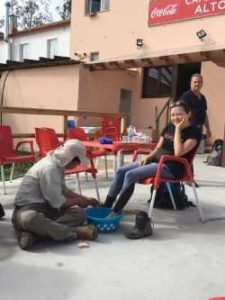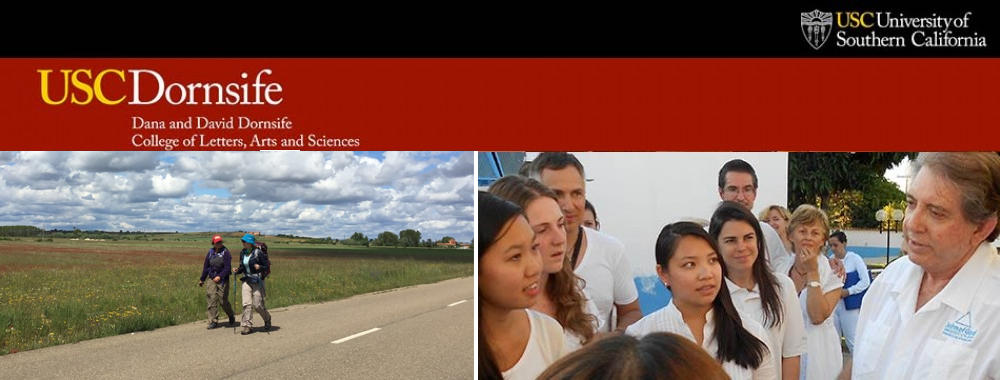A typical pilgrim on the Camino De Santiago is known to carry the contemporary form of a staff, satchel, shell, and sometimes a hat. However, on my Camino Portugues I was thrilled by the additional fun and practical items pilgrims carried along with them. The following are my top five:
Water to Wine Bottle : First, I encountered a 69-year old pilgrim with a uniquely shaped container. It is undoubtedly a water bottle, but the cap resembles a suction cup. Curiously, I asked her about her intricate water bottle, and she cheerfully responded that her bottle cap serves as a wine glass. She joked, “You never know when you’ll need it!”
Vick’s Vapor Rub: Days later, I had a late-night and deep conversation about blisters with a 30-year old Brazilian woman who I met after crossing the Portuguese-Spanish border. She said her must-have item on the Camino is Vick’s Vapor rub. She uses it as a preventative measure against blisters formed by the friction caused after walking several miles. Furthermore, she is a fan of this product because “the camphor in it makes your feet smell good, and it’s vaseline at the same time.” She also suggested applying it on your hips where your backpack may chafe your skin.
Scarf and Clothespins: As I lay in a room in Armenteira, in close quarters with 59 other pilgrims, I caught a glimpse of a woman on a bottom bunk. She had used clothespins and a wide scarf to create a shade around her bed. Though envious, I was amused and certain that this woman would sleep comfortably, as she had blocked out the light and created her own private space in a very public room.
Bucket: On one of the final days before reaching Finisterre, I met a Canadian-American pilgrim who walked with a blue bucket strapped to his pack. I assumed it was for washing his clothes, but he actually carried it to wash people’s feet. Inspired by Jesus’ act of charity, this religious pilgrim was fully equipped with bath salts, lotion and soap to gift any pilgrim’s feet with his gentle touch.

Author getting her feet washed.
Lavender oil: On a similar note of scented substances, I chatted at a cafe in Finisterre with three men from Australia and the U.S who received lavender oil from a fellow pilgrim. One of the men excitingly pulled the aliquot of lavender and insisted I smell it. The other man confirmed that the smell has been so soothing, and it has helped him sleep well the past 12 days. The last man shouted, “It might be placebo, but when we smell it, we know it’s bed time!”
These five items are not listed in a particular order, rather they are the top creative things that I would have never thought of bringing along my Camino. As a new pilgrim, I thought of bringing the “necessities” such as earplugs and socks, but these creative pilgrims have taught me that frisky and innovative items can also create a successful Camino!


